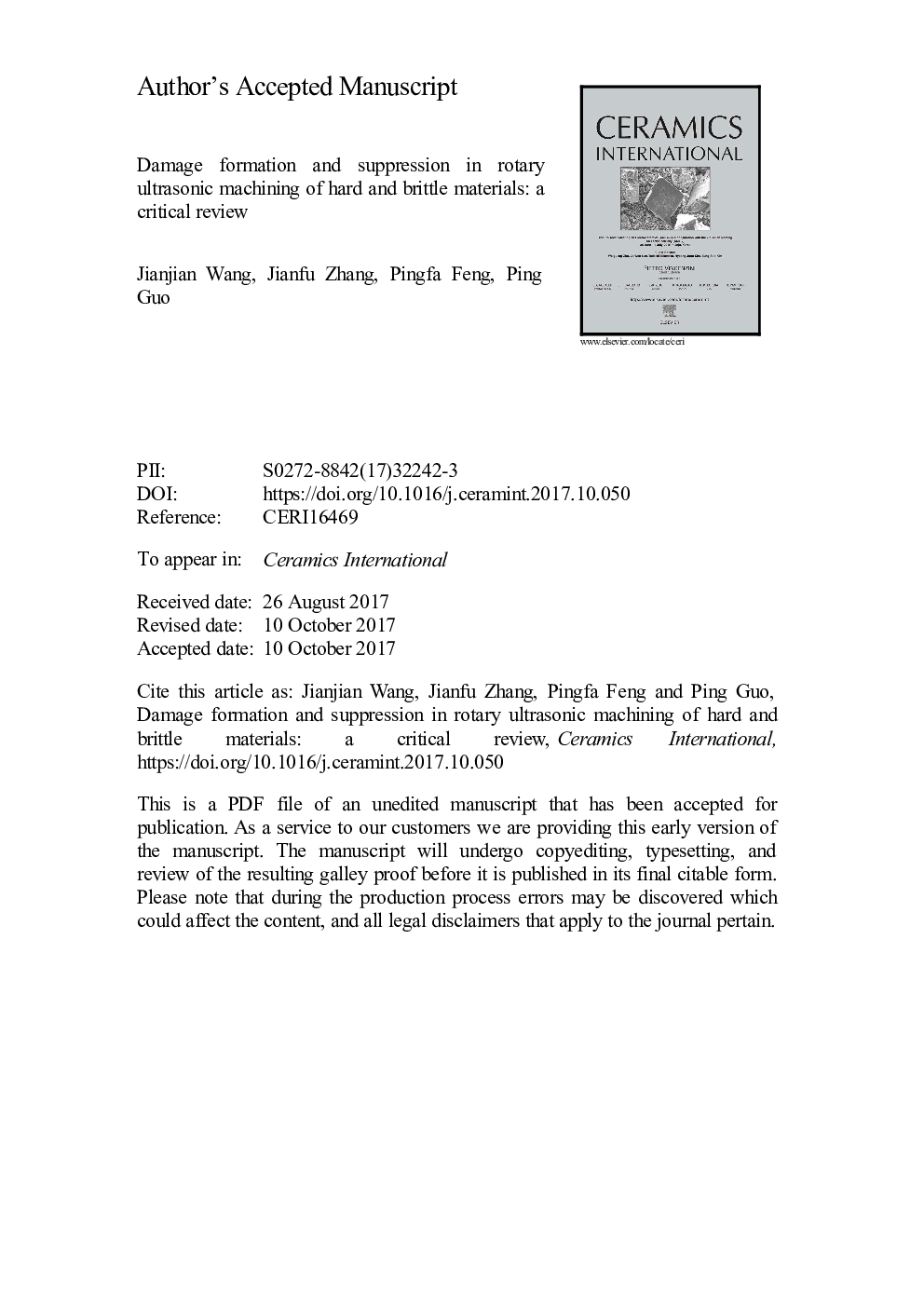| Article ID | Journal | Published Year | Pages | File Type |
|---|---|---|---|---|
| 7888574 | Ceramics International | 2018 | 28 Pages |
Abstract
Rotary ultrasonic machining (RUM) combines diamond grinding with small-amplitude tool vibration, to improve machining processes of hard and brittle materials. It has been successfully applied to the machining of a number of brittle materials from optical glasses to advanced ceramics as well as ceramic matrix composites. The emphasis of this literature review was on formation mechanism and suppression methods of machining induced damages that truly limit RUM machining efficiency improvement of brittle materials. In this review paper, material removal mechanism and cutting force modeling of RUM of brittle materials were presented, as well as all corresponding roles in the damage formation process. The critical processing capacity of RUM machine tools was described, which guarantees the RUM effectiveness and consequently constitutes the boundary condition of processing parameters determination. Formation mechanisms of edge chipping, tearing defects, subsurface damages, and their interactive effects were summarized. Advances in damage suppression methods were also described, including optimization of processing parameters, tool design of low damage, and other methods such as rotary ultrasonic elliptical machining.
Related Topics
Physical Sciences and Engineering
Materials Science
Ceramics and Composites
Authors
Jianjian Wang, Jianfu Zhang, Pingfa Feng, Ping Guo,
